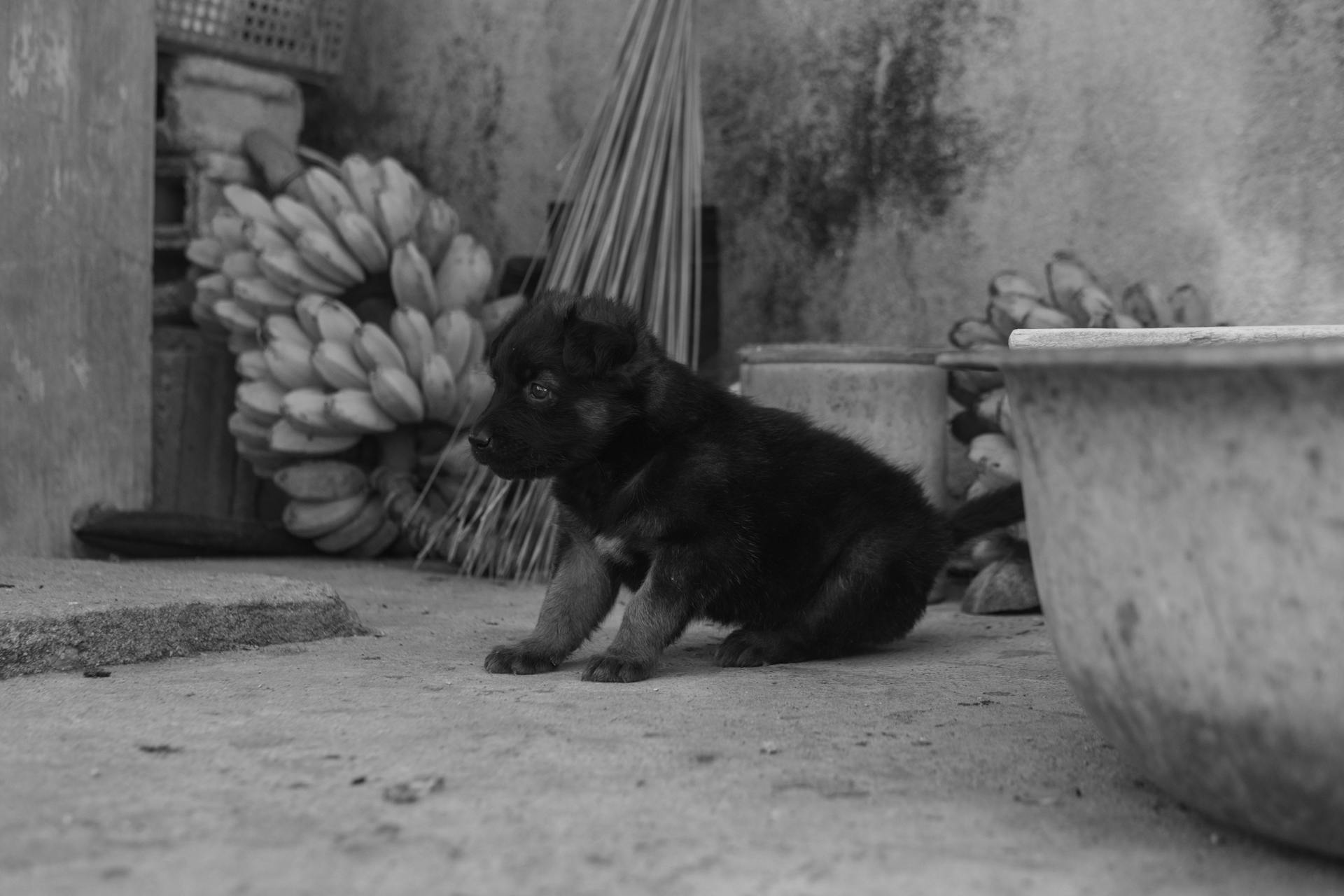
Pannus in German Shepherds is a common eye problem that affects many individuals.
German Shepherds are prone to pannus due to their genetic makeup, with studies showing that around 40% of the breed is affected.
Pannus is a condition that causes a thickening of the conjunctiva, the thin membrane that covers the white part of the eye.
This thickening can lead to the formation of a pinkish-red membrane that covers the cornea, causing vision problems and discomfort.
Causes and Contributing Factors
Pannus in German Shepherds is a complex condition that can be influenced by several factors. German Shepherds are highly predisposed to developing Pannus, indicating that the condition is likely inherited.
The German Shepherd breed is particularly susceptible to Pannus, making it essential for owners to be aware of the condition and its causes. Some breeds, such as the Greyhound and Belgian Tervuran, are also affected more than the average population.
Dogs living in hot climates, at higher elevations, or near water have additional UV exposure, which can increase the incidence of Pannus. This is especially true for animals living in areas with high UV radiation.
Limiting sunlight exposure may help slow the progression of the disease. Some people have had success in getting their dogs to wear protective visors or goggles when outdoors, but only under supervised use.
Here are some potential causes of Pannus in German Shepherds:
- A genetic predisposition - certain breeds being most affected
- Ultraviolet radiation - dogs living at higher altitudes
- Immunological factors - autoimmune disorder
Symptoms and Diagnosis
Symptoms of Pannus in German Shepherds can be subtle, but they're worth paying attention to. The first symptom you may notice is a small, pinky-white mass or lesion on the cornea, usually on the outer corners of both eyes.
These lesions can be filmy in consistency and appear as a symmetrical shape. As the condition progresses, they'll flatten out and spread over a wider area of the eye.
The lesions may also become darker in color as Pannus progresses, and you may notice inflammation of the third eyelid. The eyelids may appear pink in color, or in some cases, the inflammation may be the first symptom you notice.
Readers also liked: Are German Shepherds Good for First Time Owners
Your German Shepherd's eyes may appear red or bloodshot, and they may appear weepy or have an opaque appearance to the cornea. In some cases, small white deposits may appear in other places around the cornea.
A vet may notice the development of early symptoms of Pannus before you do, and the earlier the condition is diagnosed, the better. Regular veterinary checkups are crucial for catching Pannus in its early stages.
Treatment and Prognosis
Pannus in German Shepherds is an incurable condition, but it can be managed with careful treatment.
Topical anti-inflammatory medications, including steroids, cyclosporine, and/or tacrolimus, are the mainstay of treatment for Pannus.
These medications suppress the immune system locally to the eye, and improvement from initial diagnosis is often dramatic, but rarely complete.
A long-term maintenance regimen is continued to maintain control of the condition and best possible vision for your pet's lifetime.
Systemic side effects are rare since the medication is used only in the eye and is minimally absorbed into the circulation.
Close monitoring and regular ophthalmic exams are important to maintaining control of Pannus, as medication regimens often need to be altered over time.
The condition can be controlled, but it cannot be cured.
Treatment typically involves prescribing specific drugs to suppress a dog's immune reaction to the damage being caused to their corneas.
Ongoing treatment is necessary to control and manage the condition.
Treatment should never be stopped, even for a short period of time, as the damage caused to a dog's cornea can come back with a vengeance and result in impairing their vision.
Most common treatments for Pannus include:
- Corticosteroid therapy combined with eye drops or certain ointments
- Topical immunomodulatory therapy
- Surgical intervention can be considered, but only if a dog has not responded to any topical treatments
Corticosteroids, such as cyclosporine and tacrolimus, are commonly prescribed to reduce swelling and ease inflammation.
Antibiotics may also be prescribed to treat secondary infections that can develop in relation to Pannus.
Medications should be given according to your vet's instructions and administered throughout the remainder of your dog's life.
Regular checkups with your vet are crucial to ensure the condition is being treated properly and to avoid the progression of the disease.
Affected Breeds and General Information

German Shepherds are among the breeds that can be affected by Chronic Superficial Keratitis, a condition that can lead to pannus in dogs.
Some breeds are more prone to Chronic Superficial Keratitis than others, including the German Shepherd.
This condition can cause a range of symptoms, including redness, discharge, and squinting.
The following breeds are particularly susceptible to Chronic Superficial Keratitis:
- German Shepherd
- Airedale Terrier
- Greyhound
- Miniature Pinscher
- Siberian Husky
- Belgian Malinois
- Labrador Retriever
- Border Collie
These breeds may require more frequent veterinary check-ups to monitor for any signs of the condition.
Frequently Asked Questions
What happens if pannus is left untreated?
If left untreated, canine pannus can lead to blindness. Untreated pannus can cause irreversible damage to a dog's eyes.
What age do German shepherds get pannus?
German Shepherds typically develop pannus between 5-8 years old, with 90% of cases occurring in this breed.
Can dogs live with pannus?
Dogs can live with pannus, but early treatment is crucial to prevent vision loss. With proper care, many dogs can manage the condition and maintain a normal quality of life.
How fast does pannus progress in dogs?
Pannus progression can be slow in dogs, but it may develop faster in younger dogs under 4 years old. The rate of progression can vary depending on individual factors.
Does corneal pannus go away?
Corneal pannus may not be reversible and can persist even after treatment. In some cases, it may require ongoing management to prevent further vision damage.
Sources
- https://www.veterinaryvision.com/learn-about-pannus-and-dry-eye
- https://www.pets4homes.co.uk/pet-advice/chronic-superficial-keratitis-pannus.html
- https://www.dogsnaturallymagazine.com/holistic-care-of-pannus/
- https://allaboutshepherds.com/health/pannus/
- https://www.wpsgss.org/post/brown-goo-in-your-senior-german-shepherd-s-eyes-it-could-be-pannus
Featured Images: pexels.com


